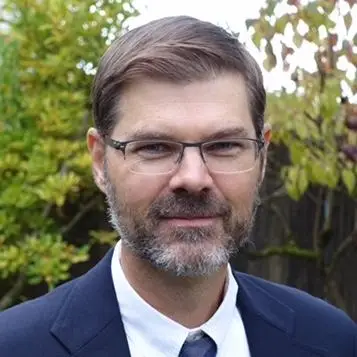I headed into my first teaching job in the 1990s full of exciting ideas about teaching and schools that I had learned from people like Ted Sizer and David Kobrin. But like a lot of young teachers, I quickly found a huge gap between my sense of what schools should be like and what they were actually like. Instead of working in a mission-driven school where adults collectively focused on helping kids learn—the ideal I had studied—I felt isolated and uncertain. I wasn’t sure what I should do or how I would get better. When teachers excelled, it seemed to be in spite of what was going on around them, not because of it.
Then, in the late 1990s, I read a report that CRPE founder Paul Hill wrote when he was working at RAND. High Schools with Character was a comparative study of big-city high schools. In it, Paul and his co-authors highlighted the features of what they called “focus schools” and how they improved educational experiences for low-income minority kids. They sounded a lot like the ideas about schools that I had left college with almost a decade earlier.
Focus schools concentrated on students’ academic and social development, for example. Instead of tracking students, they assimilated everyone into the main curriculum as soon as possible. They had strong social contracts about how administrators, teachers, and students should behave to achieve the school’s goals and preserve its climate. They were mission-driven, strong organizations.
The report concluded with a crucial question: How can we structure school systems to enable more places like this to exist? For someone who had spent his first few years out of college thinking about practice, this question about policy was new and exciting to me. I ended up cold-calling Paul and asking how I could get involved with his center.
Fifteen years later, we’re still working on that same fundamental question. While the governance-based issues we study at CRPE don’t always have an obvious or immediate impact on students, we still believe that they have the power to either facilitate (or undermine) effective schooling.
I think we’ve learned a lot about the types of governance structures that can enable more “focus schools” in cities. But there is still much that we don’t know. In a lot of ways, the issues underlying High Schools with Character still drive much of CRPE’s work:
- Who has to initiate changes in governance, and how can they come to agreement?
- What do policymakers and schools have to agree to in order to enable coherent and productive schools, and what should they avoid?
- How can coherent schools be created and sustained?
- How can educators and the public judge whether public education is helping all students learn?
There are, of course, no easy answers. People often mistakenly call CRPE the Center for Reinventing Public Education. When this happens I gently correct them: It’s “on,” not “for.” To me, “for” implies that we are committed to a particular solution. But “on” says something different: that we are committed to solving a problem; that we know there are no easy answers when it comes to rethinking educational governance and its impact on schools. Thinking about how school systems can enable better schools is a wicked problem that is as critical today as it was when Paul first moved me, years ago, from thinking about the classroom to thinking more about the big picture.
***
For 20 years CRPE has worked to develop new ideas, test them, write about them, and help people implement them. This year we’re taking stock of what we’ve accomplished. This is the first in a series of blog posts in which CRPE’s senior staff resurrect some of their favorite archived CRPE work that they would like people to take another look at.



